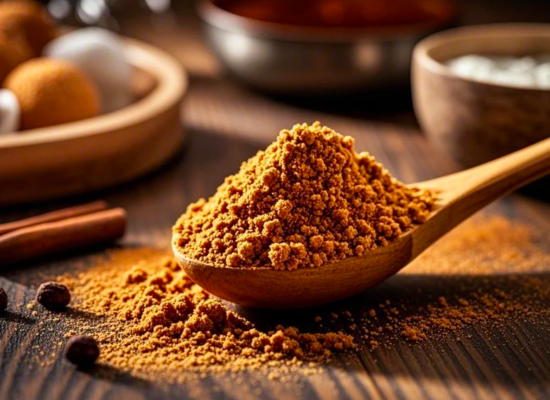Table of Contents
ToggleCaramel color is one of the most widely used food colorants, known for imparting a range of brown shades to products like beverages, sauces, and confectioneries. Produced through the controlled heating of sugars, caramel color is not only valued for its aesthetic qualities but also for its stability and versatility in various applications. This article discusses the key physical and chemical properties of caramel color, focusing on aspects such as color strength, pH, viscosity, and charge, which are essential for understanding its behavior in food systems.
Chemical Properties of Caramel Color
1. Chemical Composition
Caramel color is created by heating sugar (typically glucose or sucrose) in the presence of acids or alkalis, resulting in a complex mixture of compounds. These compounds include various sugars, aldehydes, and organic acids. Depending on the method of preparation, caramel color is classified into four main types:
– E150a (Plain Caramel)
– E150b (Caustic Sulfite Caramel)
– E150c (Ammonia Caramel)
– E150d (Sulphite Ammonia Caramel)
Each type has unique chemical properties, such as varying levels of sulfite or ammonium compounds, which influence its color intensity and stability.
2. pH Sensitivity
Caramel color exhibits significant pH sensitivity, making it crucial to understand its behavior in different food environments. At acidic pH levels (around pH 3–5), caramel color is generally stable and retains its color integrity. However, in alkaline conditions (above pH 7), caramel color may degrade, leading to reduced intensity and the formation of undesirable byproducts. Therefore, its pH compatibility is key when formulating products like soft drinks or sauces.

Physical Properties of Caramel Color
1. Color Strength (Tinting Strength)
The color strength of caramel color is an important physical property that directly impacts the appearance of the final product. Color strength, also known as “color yield”, refers to the intensity of the brown hue produced by a specific amount of caramel color. It is usually measured by the absorbance of light at a specific wavelength, often around 450 nm.
The tinting strength of caramel color can vary depending on its type. For example, E150c, which is made using ammonia, tends to have a darker and more intense color than E150a. The concentration of caramel color used in a product is typically expressed in parts per million (ppm), with levels ranging from 0.1% to 0.3% in beverages like cola.
2. Viscosity
Viscosity refers to the thickness or flow resistance of a caramel color solution. Caramel color in liquid form generally has low viscosity, but its concentration can affect the thickness of the solution. Higher concentrations of caramel color lead to a more viscous solution, which can influence the texture of the final product, especially in sauces and syrups.
In typical soft drink formulations, the viscosity of caramel color solutions is kept relatively low to ensure smooth mixing and uniform distribution. However, in thicker products like gravies or baked goods, a higher viscosity caramel color may be preferred to maintain consistency and enhance the visual appeal.
3. Charge and Electrostatic Properties
Caramel color exhibits a slightly negative charge due to the presence of organic acids and other charged species formed during the caramelization process. This charge plays an important role in its interaction with other ingredients in food formulations, especially in complex food systems where emulsions or suspensions are involved. The electrostatic properties of caramel color can influence its stability and dispersibility in products like beverages or dairy-based items.
In certain cases, the presence of a negative charge may also affect the solubility and interaction with other food components, such as proteins or minerals. This can be particularly important in formulations that require precise control over the texture or consistency of the final product.
Application and Stability in Food Products
1. Stability
Caramel color is valued for its stability in both light and temperature. When stored in the proper conditions (cool, dark environments), it maintains its color and flavor stability for extended periods. However, prolonged exposure to high heat or UV light can degrade the chemical compounds in caramel color, leading to a loss of color intensity or the development of off-flavors.
For this reason, the stability of caramel color in beverages, such as cola, is a key consideration during production and storage. To ensure long-term stability, manufacturers often conduct accelerated aging tests to assess the impact of environmental conditions on color retention and flavor preservation.
2. Influence of Caramel Color on Food Products
Caramel color not only affects the visual appeal of food and beverages but also contributes to flavor and texture. In soft drinks, for instance, caramel color is not just a visual enhancer; it also interacts with the beverage’s acidic components, enhancing its flavor profile. In sauces, caramel color may impart a mild, roasted flavor in addition to its color properties.
Conclusion
The physical and chemical properties of caramel color, including its chemical composition, color strength, pH sensitivity, viscosity, and charge, are crucial factors that determine its functionality and application in food products. Understanding these properties allows food manufacturers to optimize the use of caramel color to achieve the desired visual appeal, stability, and flavor. Whether in soft drinks, sauces, or confectionery, caramel color remains an essential ingredient in the food industry, with its versatile properties making it a popular choice for a wide range of applications.
0
